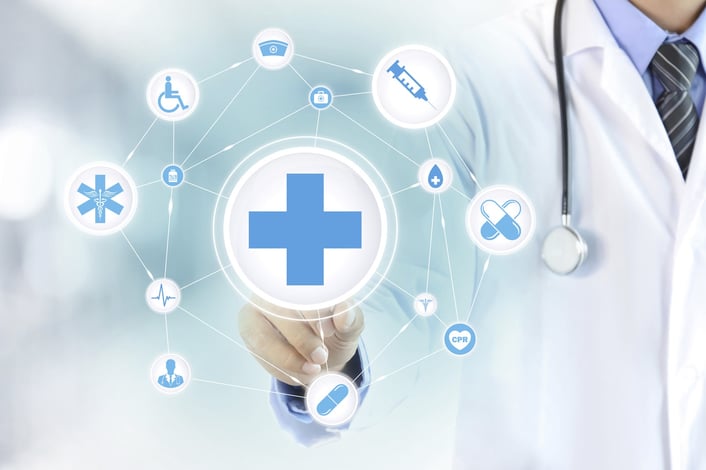The benefits of moving to digital signage platforms for Hospitals, Emergency Care facilities, and doctor’s practices are clear to the administrative staff and the doctors of these institutions. There are four main advantages that are hard to ignore:
- Using digital displays and motion graphics for wayfinding
- Aiding in faster and more precise communications among staff
- Educating the patients
- Entertaining the patients in queues in the waiting room.
All four of these advantages aid in reducing overhead and increasing profits.

There is so much time wasted by the patients when getting lost and not knowing where they are in a healthcare building. It is reported that 30% of first-time visitors get lost in a medical center. Not only do the patients lose time, become anxious, and grow frustrated in fear of being late to their appointment, it is also the staff (doctors, nurses, and administrative staff) who have to stop what they are doing and give the patient directions. At first glance, this might not seem like a flawed system, but in fact it is. About 25% of staff members are not sure of where to direct the patients and visitors where to go. If this happens, the staff will most likely try to find another co-worker who might know where the patient is looking to go. It is obvious from these two statistics that it quickly becomes very costly for the practice because of the staff labor hours lost to this predicament.
Placing a digital display with motion graphics that easily inform the visitor where they need to go at key locations will alleviate this problem. These locations would be the entrance, lobby, and near the elevators. It is important to make the graphics eye-catching enough to gain the attention of the lost and anxious patient and then show them where they need to go through wayfinding displays and content. This will free-up the staff (reducing overhead), and make the patients less stressed and more likely to revisit the doctor’s office (increasing revenue). Another way to decrease overhead by becoming digital is the increased ability to communicate between staff.
Everyone enjoys poking fun at physicians for their penmanship being illegible and the lack of communication between departments. Aside from the jokes, it is actually a time-waster for the staff members who need to decipher for transcriptions and inter-office communications. Giving the nurses and doctors the ability to type their notes directly to the hospital's database and network eliminates this problem. The physicians now have the capability of having first-hand information about patients almost instantaneously. This means that diagnostics is able to know immediately the specific patient a doctor has sent to do tests and what tests are being prescribed. Situations such as this clearly reduce costs for the health network. Hospitals and practices are also able to benefit from motion graphics on digital displays by reducing perceived wait-time while educating the patients.
Most people dread going to see the doctor for two reasons; being given bad news about their health and the other is being at the mercy of the practice as they wait to be seen by their physician. In many cases, waiting to be seen is the majority of the time spent during the appointment. By the time the patient finally sees the doctor, they are irritable and tired. The doctor is usually in a rush because the scheduler added 5 new appointments to an already filled schedule. Hospitals and doctors’ practices have noticed that by placing a digital screen containing entertaining and educational motion graphics in the waiting lobby, it reduced the perceived wait-time by over 35%. With this reduction of perceived wait-time, there are less outbursts by patients as they wait, making them willing to visit the hospital or practice again.
The use of digital displays and having a digital signage network at a hospital and practice effectively creates a more efficient environment for everyone involved. When the setting becomes more efficient, the patients and physicians are happier. Yes, that's right, a hospital might become a happier place when they are more efficient.

